#sewing historical
Text

I might have taken the historical inaccuracies a step too far this time. But hey what's more historically accurate than using the scraps you've stashed away for moments such as these instead of going out to buy something new. So let's go over what's actually happening here. While I was practicing handsewing the eyelets I very quickly realized that this material was way to delicate to handle the tension that would enevitably be put on the side seams (which I was kind of expecting when I altered the dress pattern for whimsy instead of accuracy). So I decided to reinforce the sides with two boning channels on either side of the eyelets, but it still didn't feel secure enough. So I decided to reinforce the section where the eyelets would go as well. The only problem, I was completely out of ribbon. Or so I thought. Ironically enough, while digging through the deepest recesses of my misc. sewing storage, I found this old ribbon I used to tie in my hair when I was playing volleyball as a kid. Now there's a lot of other ways I could have reinforced this strip of fabric, including more historically proven methods, but why do that when I could just use this hilarious "go team" ribbon I didn't even remember I had. So that's what I did and this is the result. I would also like to emphasize that this is the inside of the garment so the black lettering won't show through to the outside of the garment, so this will just have to be our little secret.
#i was going for historical accuracy at first#but this was so much faster#and now its got a cute memory attached to it#so im happy enough with the result#this is so funny to me#i have a ton of this ribbon left as well so im going to use it in another project#sewing#my sewing#sewing project#vintage fashion#fashion design#renaissance#sewing wip#medieval dress#ren faire outfit#ren faire#historical costuming#historical dress#sewing historical#historical costume#history bounding#sewblr#vaguely amusing#our little secret#i am amused#medieval wip#wip#current wip#i would say progress will be a lot faster now that this problem is solved#but now i have to hand sew 20+ eyelets so rip to that i guess lol
6 notes
·
View notes
Text
PSA to all historical fiction/fantasy writers:
A SEAMSTRESS, in a historical sense, is someone whose job is sewing. Just sewing. The main skill involved here is going to be putting the needle into an out of the fabric. They’re usually considered unskilled workers, because everyone can sew, right? (Note: yes, just about everyone could sew historically. And I mean everyone.) They’re usually going to be making either clothes that aren’t fitted (like shirts or shifts or petticoats) or things more along the lines of linens (bedsheets, handkerchiefs, napkins, ect.). Now, a decent number of people would make these things at home, especially in more rural areas, since they don’t take a ton of practice, but they’re also often available ready-made so it’s not an uncommon job. Nowadays it just means someone whose job is to sew things in general, but this was not the case historically. Calling a dressmaker a seamstress would be like asking a portrait painter to paint your house
A DRESSMAKER (or mantua maker before the early 1800s) makes clothing though the skill of draping (which is when you don’t use as many patterns and more drape the fabric over the person’s body to fit it and pin from there (although they did start using more patterns in the early 19th century). They’re usually going to work exclusively for women, since menswear is rarely made through this method (could be different in a fantasy world though). Sometimes you also see them called “gown makers”, especially if they were men (like tailors advertising that that could do both. Mantua-maker was a very feminized term, like seamstress. You wouldn’t really call a man that historically). This is a pretty new trade; it only really sprung up in the later 1600s, when the mantua dress came into fashion (hence the name).
TAILORS make clothing by using the method of patterning: they take measurements and use those measurements to draw out a 2D pattern that is then sewed up into the 3D item of clothing (unlike the dressmakers, who drape the item as a 3D piece of clothing originally). They usually did menswear, but also plenty of pieces of womenswear, especially things made similarly to menswear: riding habits, overcoats, the like. Before the dressmaking trade split off (for very interesting reason I suggest looking into. Basically new fashion required new methods that tailors thought were beneath them), tailors made everyone’s clothes. And also it was not uncommon for them to alter clothes (dressmakers did this too). Staymakers are a sort of subsect of tailors that made corsets or stays (which are made with tailoring methods but most of the time in urban areas a staymaker could find enough work so just do stays, although most tailors could and would make them).
Tailors and dressmakers are both skilled workers. Those aren’t skills that most people could do at home. Fitted things like dresses and jackets and things would probably be made professionally and for the wearer even by the working class (with some exceptions of course). Making all clothes at home didn’t really become a thing until the mid Victorian era.
And then of course there are other trades that involve the skill of sewing, such as millinery (not just hats, historically they did all kinds of women’s accessories), trimming for hatmaking (putting on the hat and and binding and things), glovemaking (self explanatory) and such.
TLDR: seamstress, dressmaker, and tailor are three very different jobs with different skills and levels of prestige. Don’t use them interchangeably and for the love of all that is holy please don’t call someone a seamstress when they’re a dressmaker
#sewing#historical sewing#sewing knowledge#writing guide#PSA to writers#historical fiction#fantasy writing
18K notes
·
View notes
Text

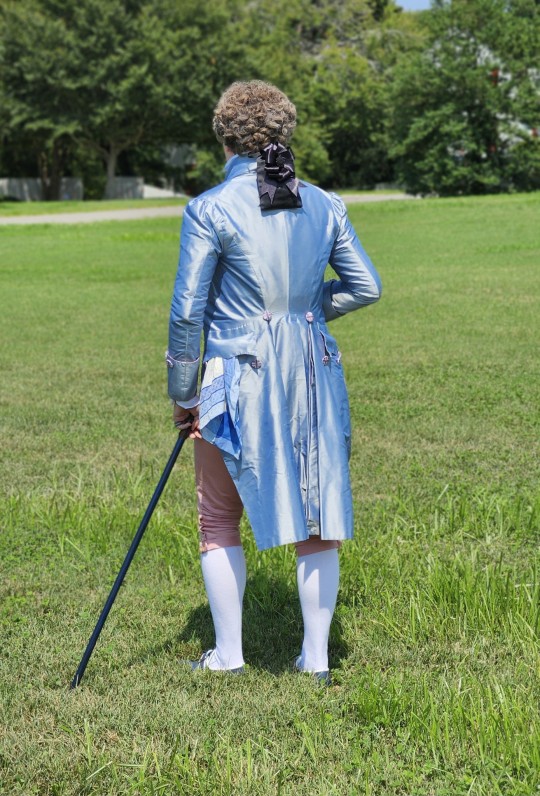
The Trans Court Suit
This was my big project I made over the summer! I am beyond proud of and happy with the coat.
The first initial project I wanted for this was a pink waistcoat. I grew up liking pink and most of my stuff was, but that (along with growing up in a hot pink room) made me start to resent pink a lot especially as a teenager. (I think a lot of trans guys have similar stories.) But of course pink was very popular for men throughout a lot of European fashion history. So in many ways this was a self healing project for me, at least in that regard. Which I think was a success!
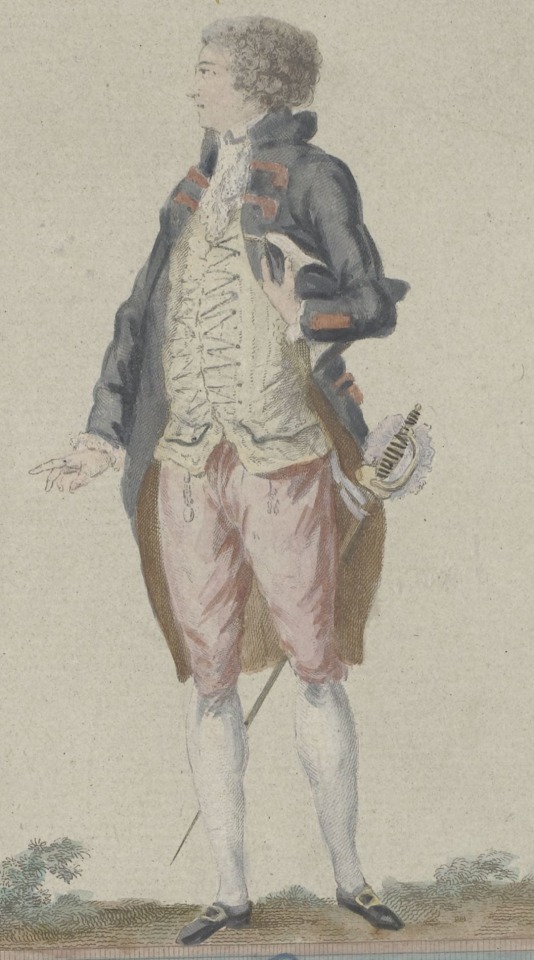

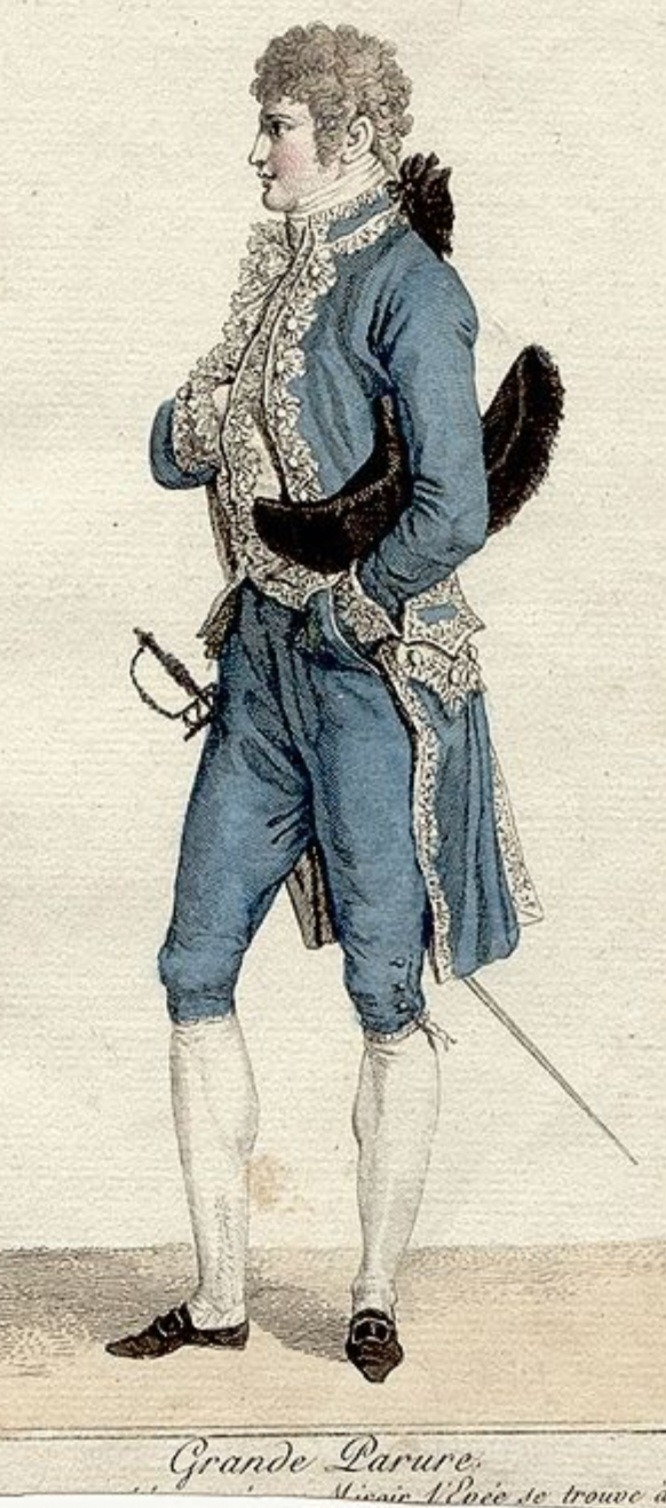
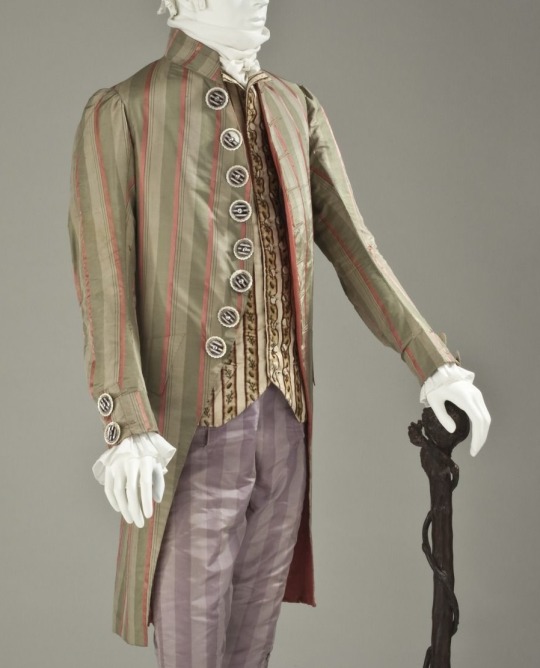
I actually found the first two portraits after I started working on the outfit, they looked perfect! The first especially is super close to my hair.
The silks for the coat as well as the linen interfacings were second hand or scraps in my stash. The cotton sateen was from Burnley and Trowbridge. This is the first project I fully drafted myself. The waistcoat and breeches were made from an 1820s manual and the coat was primarily taken from Period Patterns by Doris Edison, using also Agreeable Tyrant for interfacings and The Taylor's Complete Guide (for shape reference).
This is also the most hand sewing I’ve done for an outfit. Both of the fronts of the coat and waistcoat are completely by hand. Most of the coat is by hand with machine for structural/backstitches, mostly the seams but not the edges. In total there are 22 buttons.
I made the waistcoat straight across for two reasons A. So I can wear it with my other stuff B. I didn’t have any more trim, that was it. I’ll probably make a more 18th century style waistcoat out of white for this (at some point).
The breeches ended up being too small for my thighs so I started getting frustrated with the fit and rushed them by the end so I could move on. (I accidentally sewed the buttonholes on the wrong side).
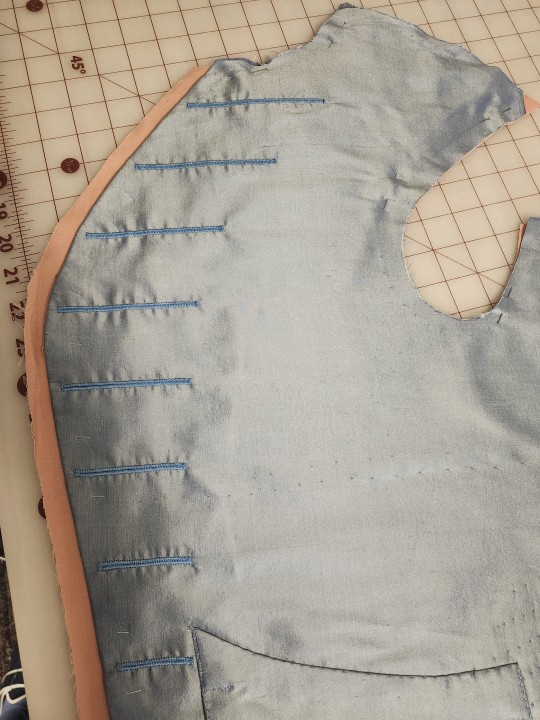
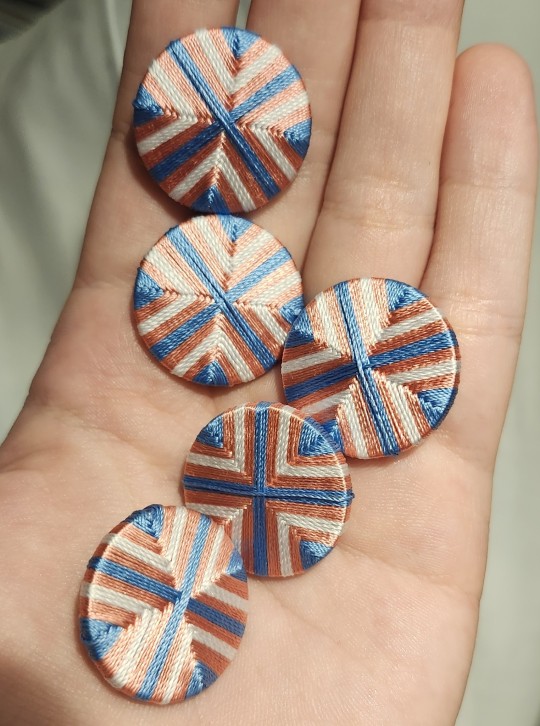

2K notes
·
View notes
Text


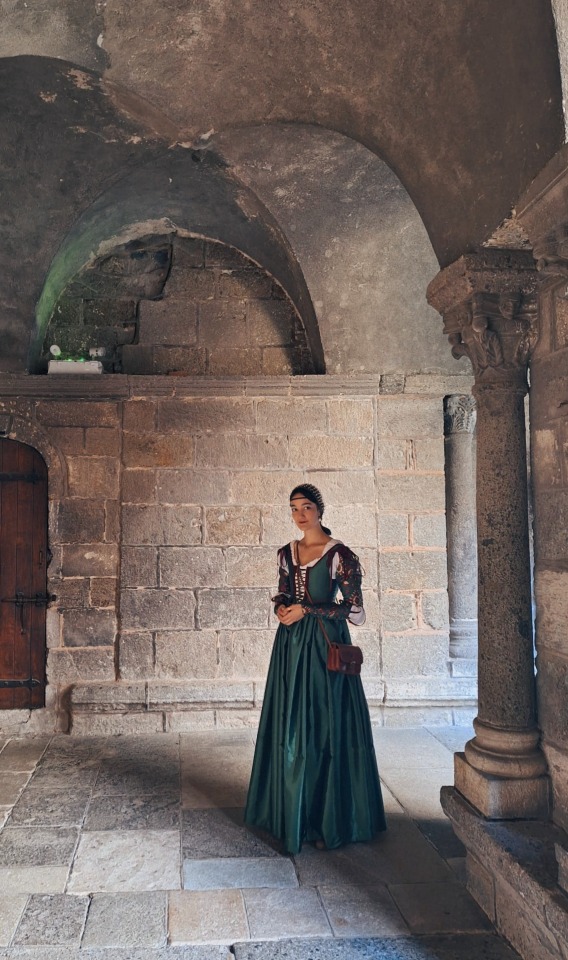
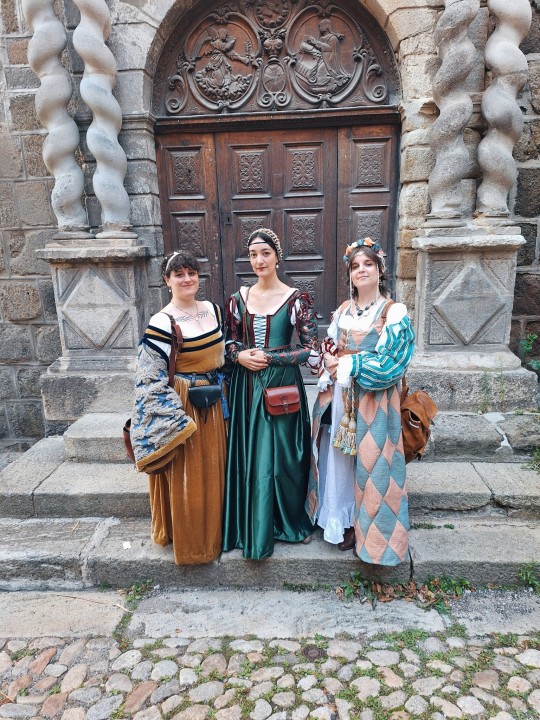

My gamurra and my friends, with @surikane !
1K notes
·
View notes
Text
Dearest Tumblr: My business is running low on money. My shop needs an algorithm boost before the holiday rush starts. I would like to be able to pay myself and my two hired minions this month. So that means it's time for... SERIOUS SAVINGS.

I design easy-as-hell embroidery patterns, sell sewing supplies I test and use myself, and have just added art nouveau print-on-demand items like umbrellas, dresses, and mugs.
Find me at thehaberdasheress.etsy.com
And because I love you more than all the other platforms, until this Sunday September 16 you can use the promo code TUMBLRSECRET for an additional 10% off.
(Also. If you just want to throw money at me without any kind of compensatory merchandise, I have absolutely no shame anymore. Here's my Paypal.)
#costuming#embroidery#historical costuming#cottagecore#diy projects#art nouveau#visible mending#sewing#crafting#crafts
764 notes
·
View notes
Text

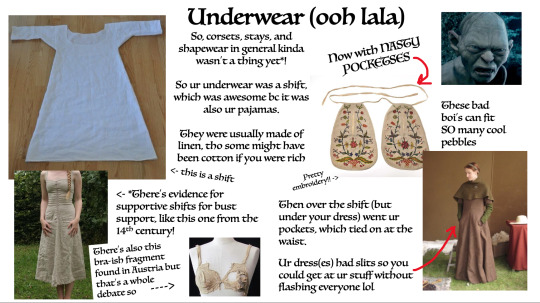
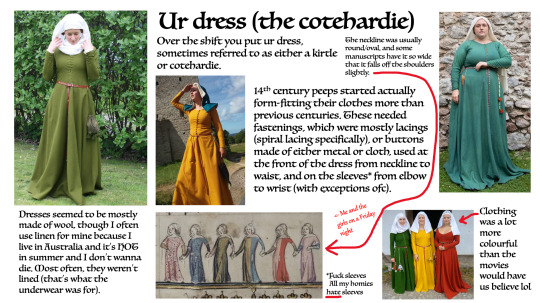
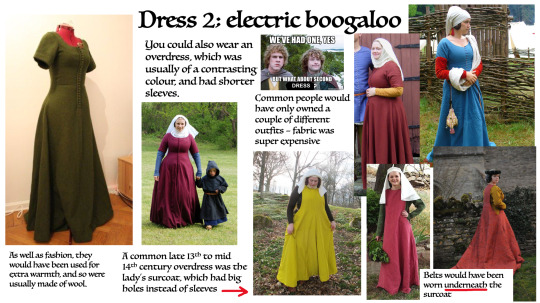



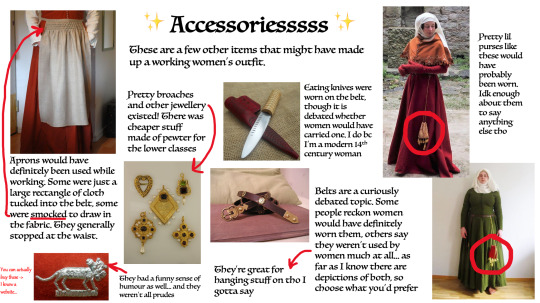
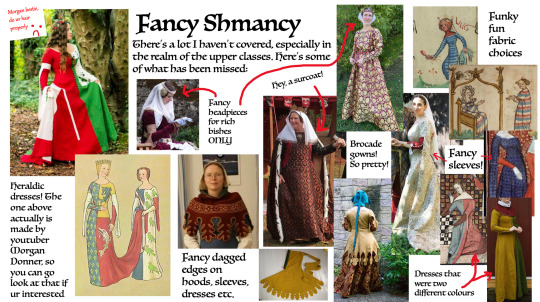
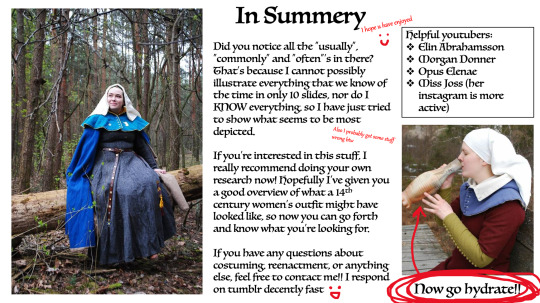
If you’re on mobile, you may have to click on the images for better quality!
Plain text version with image descriptions is under the cut.
Please note that the image descriptions will be reflecting what I am trying to convey with the photo, rather than the total look of the photo itself. For example if I am trying to describe a dress, the hair colour of the person wearing it will be ignored. This is to reduce the total word count of the descriptions, because I have a lot of images to describe. On this note, I have also streamlined the information as much as possible.
[Plain text description:]
First slide: Mariota’s Guide to 14th Century (Medieval) Women’s Clothing
This slideshow is brought to you by @the-merry-otter on tumblr
ALRIGHT LISTEN UP MOTHERS AND FUCKERS. I’m bored, so today we’re going to be talking about medieval clothing. Specifically fourteenth century English clothing because that’s what I’m good at. (Source: trust me bro I’m a reenacter). Also this is all female stuff - sorry masc leaning folks, I’ll get to you someday!
Disclaimer: this is not completely comprehensive or nuanced in the slightest, it’s just a quick overview guide. Do your own research xoxo.
[Image ID: to the left is a picture of a woman in a light blue dress and a pink hood gazing out at a lake. The hood has a skirt that falls over her shoulders, and there is along thin pipe attached to the back of the hood that dangles to her knees. The edges of the hood are decorated with burgundy crochet. The picture is captioned “beautiful, stunning, gorgeous, literal goals.” End ID]
[Image ID: To the right is a picture of a typical renn faire outfit. It has a white poofy underdress, a black corset, and a brown skirt. There is a red cross drawn over the image. It is captioned “very pretty, but definitely not medieval sorry!” End ID]
Second slide: Underwear (ooh la la)
Now with nasty pocketses
[Image ID: a picture of gollum, from lord of the rings, snarling in disgust. There is a line in The Hobbit where he asks Bilbo what he has in his nasty little pocketses, which is what I am referencing. End ID]
So, corsets, stays, and shapewear in general kind of wasn’t a thing yet. So your underwear was a shift, which was awesome because it was also your pajamas. They were usually made of linen, though some might have been made of cotton is you were rich.
[Image ID: A plain white linen garment laid out flat on the floor. It is a dress that hangs to about knee length, with elbow length sleeves. An arrow points to it with text reading “this is a shift”. End ID]
There is evidence for supportive shifts for busy support, like this one from the fourteenth century!
[Image ID: a second shift, worn by a female presenting person. It is laced up the front, and is a lot tighter and more fitted, especially around the bust. It has straps instead of sleeves. End ID]
There’s also this bra like fragment found in Austria, but that is a whole debate so.
[Image ID: A bra-like garment fitted to a mannequin. It seems to be made out of white linen, coloured with time. The left cup is damaged, and overall the garment looks incomplete. End ID]
Then, over the shift, yet under your main dress went your pockets, which tied on at the waist. Your dresses had slits do that you could get at your stuff without flashing everyone lol.
[Image ID: A picture of medieval pockets. They are upside down teardrop shaped, but the point is flat and is part of the waist ties. There are slits in the side up the top to access the inside. They are cream coloured with bright floral embroidery. The caption reads “these bad boys can fit so many cool pebbles.” End ID]
[Image ID: A young female-presenting person wearing medieval clothing. She has her hands in the pocket slits of her dress. They are just below hip height. End ID]
Third slide: your dress, or the cotehardie. (Pronounced coat hardy)
Over the shift you put your dress, sometimes referred to as either a kirtle or cotehardie. 14th century people started actually form-fitting their clothes more than previous centuries. These needed fastenings, which were mostly lacings (spiral lacings specifically), or buttons made of either metal or cloth, used at the front of the dress from neckline to waist, and on the sleeves from elbow to wrist, with exceptions of course.
(Sidenote: fuck sleeves, all my homies hate sleeves)
[Image ID: a woman in a warm yellow dress to the left of the text. The dress is constructed simply, with a single piece of fabric used for the length of the body so there is no waist seam. The skirt is widened by inserting four triangles, one each at the front and back, and one on each side. The front has buttons made of the same fabric as the dress, that go down to the belt at the waist. The sleeves have similar buttons from wrist to elbow, on the outside of the arm. The woman is also wearing a liripipe hood. End ID]
Dresses seemed to be mostly wool, though I often use linen for mine because I live in Australia and it’s hot in summer and I don’t want to die. Most often they weren’t lined (that is what the underwear was for).
[Image ID: in the top left of the slide is a woman wearing a green woollen dress. It is constructed the same as the previous image, except it has spiral lacing on the front instead of buttons. The sleeves are fastened by three small buttons. She is wearing a simple and veil. End ID]
[Image ID: the top right of the slide shows a woman in a teal coloured dress, similar to the one before. This one has metal buttons at the sleeves and down the front. She wears a veil only. End ID]
The neckline of these dresses was usually round or an oval shape, and some manuscripts have it so wide that it falls off the shoulders slightly.
[Image ID: A photo of a medieval manuscript, depicting six medieval ladies in a row holding hands. The neckline of their dresses is wide enough that the tops of their shoulders are visible. The image is captioned “me and the girls on a Friday night”. End ID]
Clothing was a lot more colourful than the movies would have us believe lol.
[Image ID: Three women, each in dresses similar to the ones before. To the left is a forest green, the middle one is bright saffron yellow, and the one to the right is a vibrant tomato red. End ID].
Fourth slide: Dress two; electric boogaloo
[Image ID: Merry and Pippin from lord of the rings. Above them, meme text reads “we’ve had one, yes”, and then continues below with “but what about second dress?”. End ID]
You could also wear an overdress, which was usually of a contrasting colour and had shorter sleeves.
As well as fashion, they would have been used for extra warmth, and so were usually made of wool.
[Image ID: a woman in a maroon coloured dress like the ones on the previous slide. The sleeves stop just above her elbow, revealing a blue dress underneath. End ID].
Common people would have only owned a couple of different outfits, as fabric was super expensive.
[Image ID: various pictures of women with examples of an overdress. They are all constructed the same as the overdress, but with shorter sleeves that reveal a second sleeve of a different colour underneath. End ID]
A common late thirteenth to mid fourteenth century overdress was the ladies surcoat, which had big holes instead of sleeves.
Belts would have been worn underneath the surcoat.
[Image ID: three photos of women wearing surcoats. They are normal dresses, except there is a large D shape cut out of either side, leaving a large hole from the shoulder to below the hip. They have no buttons down the front. One of the surcoats is made of red brocade, and obviously belongs to an upper-class impression. End ID].
Fifth slide: Hair and headwear
Hair was worn braided and pinned up, with a coif (cap) and either a wimple or veil, or both. The wimple and/or veil were usually pinned to the coif, or secured on a band of fabric around the head.
Veils would be either oval, or a D shape. Wimples were rectangular. A wimple goes under the chin and a veil goes over your head.
[Image ID: a close up of a woman wearing a wimple. It is made of a light fabric, likely silk. The wimple wraps under her chin and is secured at the back of her head. A narrow band of fabric or possibly leather circles her brow, which would have been used to secure the wimple. End ID.]
[Image ID: A picture of YouTuber Morgan Donner wearing a wimple and veil. The wimple wraps under her chin, and the veil is placed on top of her head, draping down past her shoulders. It does not cover her face. Loops of hair are visible either side of her face. End ID]
All the headwear would be made of linen, thin wool, or silk, depending on class. The veils could also be made really fancy by ruffling the front edge or by attaching pearls.
[Image ID: a woman in a wimple and half-circle veil. The edge of the veil that frames her face is elaborately ruffled. The edge of a coif is visible under the veil. End ID]
I ride the bus in my medieval gear a lot because of events, and way too many people think I’m Amish because of my veil. It’s honestly just funny at this point. I should keep a tally.
[Image ID: a woman wearing a St Birgitta’s coif, pinning a wimple at the back of her head. The coif is a simple white linen cap that encloses the head, with a line of lace down the centre of the head. It is secured with a loop of linen around the head. End ID].
[Image ID: a picture of someone with plaits that have been pinned around the head like a crown. It is captioned “you could also pin your hair up like this”. End ID]
Working women might have just wrapped their head in a scarf instead, fuck this fancy shit right?
[Image ID: a woman in a headscarf that has been twisted and then looped around the front of her head. It is captioned #girlboss. End ID].
Fake braids were a thing! Blonde hair in particular was very fashionable, and bleaching or fake braids were sometimes used to achieve that.
[Image ID: two fake braids made of a coarse fibre. They are blonde in colour, and are looped like a hairstyle seen on many of the reenactors. They have white ribbons attached to the top end to help secure them to the head. End ID]
Sixth slide: Cloaks and hoods
These would have actually been two seperate garments! Integrated hoods on cloaks didn’t actually become a thing until the … seventeenth century or so? (Citation needed).
Cloaks were a lot simpler than the typical cloak we think of nowadays. Often they were just a rectangle of wool, or by the fourteenth century, sometimes a half circle.
They were almost always wool as far as I know, and were generally fastened by a cloak pin or buttons.
[Image ID: a metal cloak pin. It is a circle with a small opening at one point. A long pin is attached via a loop, allowing it to slide along the pin. It can fit through the opening in the circle. To use one, you would gather the fabric on the pin, and then slot the circle over the pin and then turn it, so the fabric is trapped between circle and pin. This is much easier to demonstrate than describe. The picture is captioned “these bad boys are the real MVP’s though”. End ID].
[Image ID: a diagram showing the construction of the bocksten man cloak. It is a half circle pieced together by laying strips of fabric together. In the centre of the flat side, a half circle is cut out for the neck. End ID]
[Image ID: a reconstruction of the bocksten man cloak. It is orange wool, and lined with an off-white linen. It is fastened on the right shoulder by three fabric buttons. It would fall to just above the wearers knees. End ID].
Women’s hoods could be short and open, or with a longer skirt and closed with buttons. Liripipe (pronounced leery-pipe) hoods were named for the tube of fabric that dangled off the back of your hood, varying in length. As well as a fashion statement, it could also be wrapped around the neck like a scarf if it got cold.
Hoods were nearly always wool I’m pretty sure, though they were often lined with linen, silk, or cotton.
[General description: a short liripipe hood would be open, with the bottom only reaching your shoulders. They were made from a single piece of fabric that would wrap over your head, with the seam down the centre back of your head. It was flared at the bottom by inserting triangular gores. At the front edge near your face there would be a strip jutting out that went from one side of your chin, over your head, and down to the other side. This would usually be folded back, revealing the lining colour. The bottom of the hood could either just reach the base of your neck, or reach down to just past your shoulders. The former would usually be open at the front, with fastenings optional. The latter option with the longer skirt was almost always able to be fastened up the front with fabric buttons. The liripipe itself was a thin flat tube of fabric fastened at the centre top back of the hood. End ID]
Fun fact, 90% of why I decided to reenact the fourteenth century specifically was because of liripipe hoods.
Seventh slide: Feet (not in a weird way)
Hose were used to keep your legs warm. For women they were usually knee height, and fastened just underneath it with a garter or tie.
[Image ID: a single light yellow hose, belted beneath the knee with a leather garter. The seam is down the centre back of the leg going all the way to your toes, and then around the top of the foot in front of where it connects to your leg. End ID]
Hose usually would have been made from wool, and were cut on the diagonal (bias) of the fabric to get the maximum stretch possible from the fabric. They still were looser than modern tights are though!
Knitted socks were also a thing I’m pretty sure, but I don’t know enough about them. Sorry!
Shoes were simple, usually referred to as turnshoes because of how they were made. Fun fact: the lack of foot support means that turnshoes are similar to going barefoot in terms of how you walk. Some reenactors love it, some hate it, and some are indifferent lol.
[Image ID: a pair of turnshoes made of dark leather. They have a strap that would fasten around the front of the ankle, similar to some modern shoes. The toes are pointed, and it is captioned “pointy toes were fashionable, especially for men”. End ID].
Because shoes were really hard to waterproof, (ask me how I know), and didn’t have solid soles, wooden pattens (pronounced pat-tens) were worn to keep you off the ground while outside.
[Image ID: a person wearing a pair of wooden pattens over their shoes, standing on a drenched cobblestone street. They are wooden platforms with an archway on the bottom, and are attached to the foot with leather straps around the toe, ankle, and around the back of the heel, similar to modern sandals. The image is captioned “ye old crocs”. End ID].
[Image ID: a woman’s leg with the skirts drawn back, revealing the bright yellow hose underneath. It is fastened below the knee with a strip of fabric. She wears a turnshoe with a buckled strap. End ID]
Eighth slide: Accessories
These are a few other items that might have made up a working woman’s outfit.
Aprons would definitely have been used while working. One were just a large rectangle of cloth tucked into the belt, some were smocked to draw in the fabric. They generally stopped at the waist.
[Image ID: a woman in a red dress, with a very light brown apron. It is smocked at the top, and is attached around the waist with a string. End ID].
Pretty broaches and other jewellery existed! There was cheaper stuff made of pewter for the lower classes.
[Image ID: five gold brooches, studded with different jewels and pearls. End ID].
They had a funny sense of humour as well… and they weren’t all prudes.
[Image ID: a pewter broach of a cat carrying a dick and balls in its mouth. It is captioned “you can actually buy these. I know a website.” End ID].
Eating knives were worn on the belt, though it is debated whether women would have carried one. I do because I’m a modern fourteenth century woman.
[Image ID: a small knife with a wooden handle, laying on top of a leather sheath that has been dyed red. End ID]
Belts are a curiously debated topic. Some people reckon that women would have definitely worn them, others say they they weren’t used by women much at all. As far as I know there are depictions of both, so choose what you’d prefer. They are great for hanging stuff on I gotta say.
[Image ID: a coiled up brown leather belt. The buckle and tip are a gold metal, and it has decorative flower studs along its length in the same metal. End ID]
Pretty little purses would have probably been worn. I don’t know enough about them to say anything else though.
[Image ID: two different pictures of reenactors wearing purses. One is brocade and the other a red fabric. They are in the shape of an upright triangle, and both have five tassels hanging from the bottom edge. They hang off the belt with long drawstrings. Unrelated to the purses, one of the women is wearing a gorgeous orange liripipe hood, that is embroidered and dagged on the bottom skirt edge. End ID]
Ninth slide: Fancy Shmancy
There is a lot I haven’t covered, especially in the realm of the upper classes. Here is some of what has been missed. (Buckle up because this section is very image heavy. I will be as concise as possible).
Heraldic dresses! If you are interested, go check out Morgan Donners video on YouTube.
[Image ID: a picture of Morgan Donner in her heraldic dress. One half of the dress is red, and the other is green, except for where it has been cut out by white with an ermine pattern on it. Her hair is unbound and uncovered, except by a small flower crown. It is captioned “Morgan bestie do your hair properly :(“. End ID]
[Image ID: a drawing of two women in heraldic dresses. The first has a blue right half with a yellow printed design. The top left of the dress is yellow with a blue fish, and the bottom left is red with a white fish. Her train is held by the second lady, who’s dress is blue on the right, and white with green birds on the left. End ID].
Fancy headpieces for rich bitches only.
[Image ID: a reenactor doing a high class impression. Her hair is bound up in Pearl studded hair nets on either side of her head like modern earmuffs, with a spiked coronet around her brow. She has a sheer silk wimple on. End ID]
Fancy dagged edged on hoods, sleeves, dresses, etc.
[Dagging description: where the edge has been cut away to make decorative dangly bits. One hood has red leaves around the bottom edge for example, and another just has a pretty geometric pattern. End description].
Brocade gowns! So pretty!
[Image ID: several different pictures of high class ladies wearing brocade gowns of different colours. These are similar to the wool dresses we were looking at earlier, but with longer trains, and often long draping sleeves. There is even a brocade surcoat. End ID]
Fancy sleeves!
[Image ID: examples of different long sleeves. On some, the sleeve is normal until the elbow, and then it falls away to a long strip of fabric that dangles to the ground. Not mentioned on the slide itself is tippets, which was a band of (usually white) fabric just above your elbow, with a thin strip of the same fabric that draped down to the floor. End ID].
Dresses that were two different colours.
[Image ID: examples of dresses that are exactly like the earlier wool dresses, except they are literally half one colour and half another. The manuscript example is a blue and red overdress with fancy sleeves, and the reenactor example is a yellow and green underdress with a red hood. End ID]
And of course, some of the funky fun fabric choices.
[Image ID: a manuscript depiction of a woman carrying a dead bird. Her hood is red and white striped horizontally, and her dress is dark and light blue striped, also horizontally. End ID].
[Image ID: a manuscript depicting a woman talking to a second lady in a chair. The dress on the first has horizontal stripes of white, red, yellow, and blue, repeated, and the second has horizontal stripes of white, pink, and light blue. Interestingly enough the latter colours are very similar to the transgender flag which would make a very cool dress project. Hmm. End ID].
Tenth (and final) slide: In summery
(Small red text below title reads “I hope you have enjoyed” with a drawn smiling face).
Dis you notice all the “usually” “commonly” and “often’s” in there? That’s because I cannot possibly illustrate everything that we know of the time in only ten slides, nor do I know everything, so I have just tried to show what seems to be the most depicted.
Note: I probably even got some stuff wrong by the way.
If you’re interested in this stuff, I really recommend doing your own research now! Hopefully I have given you a good overview of what a fourteenth century womens outfit might have looked like, so now you can go fourth and know what you’re looking for.
If you have any questions about costuming, reenactment, or anything else, feel free to contact me!! I respond on Timblr decently fast ☺️
[Image ID: a reenactor sitting on a log, staring into the distance with a slight smile. She is wearing a grey-blue dress, belted at the waist with a small purse dangling from it. She has a dark blue cape and a light blue hood, that has fallen back to show a ruffled white veil. There is a pewter broach on her hood. A leather turnshoe peeks out from beneath the hem of her dress. End ID]
A list of helpful YouTubers:
Elin Abrahamsson
Morgan Donner
Opus Elenae
Miss Joss (her instagram is more active).
Now go hydrate!!
[Image ID: a woman in fourteenth century garb drinking from a jug. End ID]
#medieval reenactment#historical reenactment#medieval#medievalcore#medieval aesthetic#14th century#sewing#fashion#clothing#history#historical#sca#i’ll be on my merry way now
19K notes
·
View notes
Text
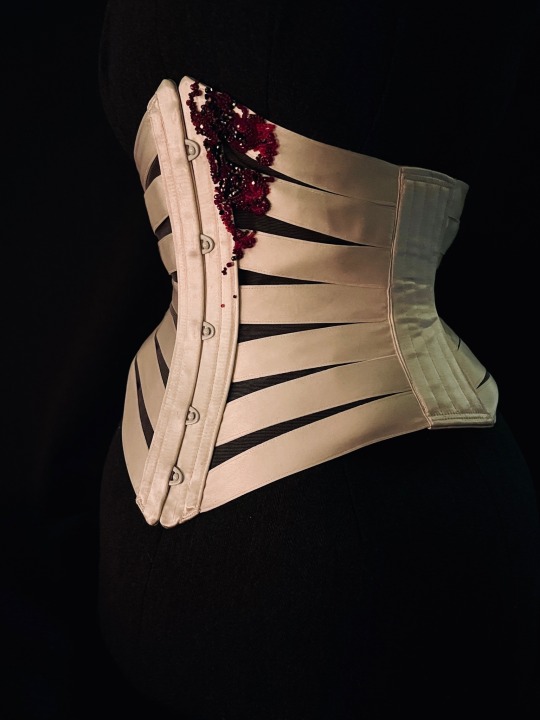

The Saddest Girl In The World
Edwardian-ish ribbon corset with beading, 2023
Silk ribbon, cotton taffeta ribbon, Czech glass beads
#project: crown prince kiriona#project: ribbon corset#project: historical sewing#cosplay#media: the locked tomb#tlt#the locked tomb#historical costume#Edwardian#Nona the ninth#historical sewing#costume#poetry in costume#beading#excuse the iffy lacing I used what I had on hand which is too wide and I didn’t want to unlace Helga#EDIT: upsetti#I captioned it something sensible rather than WHITHER THE HAMBURGER???#there’s time#not sure why this has broken 1000 notes but it is releasing all the brain chemicals
3K notes
·
View notes
Text



Remember this???? I finished it!! I finished my corset cover yoke!!!! I'm so very proud of it even though it took FOREVER
I've learned I'm too ambitious for my own good but as long as I can keep finishing these projects I'm not going to do anything about it :")
Anyways, onto the actual sewing!
#historical costuming#historical sewing#irish crochet#crochet lace#crochetblr#lace making#swallowbird crafts
525 notes
·
View notes
Text
I've been putting off making stays for years because I knew it was going to be a bit of a pain. After much dithering I started with Laughing Moon 115 and made a mockup. It was a tough choice between the theatrical but easier version and the harder but more accurate historical version.

Eventually I decided on the corded historical option. New skills and all that. Mockup from scraps.


Not bad. After consultation from the Laughing Moon Facebook group I lengthened the straps and widened the hip gores to correct the fit.
On to the final! Light blue twill for the lining and charcoal sateen for the fashion fabric. I used regular pencil to mark the proposed cording channels.
This... may have been a mistake since I couldn't get the marks to go away, even after washing.


Oh well. I used Lily and Cream cotton yarn as the cording and modified some of the lines on the front. Powder blue bias binding machine sewn to the front and hand whip stitched to the lining finished off the top and bottom. I used blue satin ribbon to conh in the top a little and as the lacing.





Next up: petticoat!
561 notes
·
View notes
Text
Sewing 1890s Day Dress in Doll Scale
I went slightly overboard with this second historical doll project. Here's my first one. The style is from around 1897 and more of a middle class style. As with my first doll outfit, I tried to stick to historical methods as much as possible, but the scale forced me to do some deviations. I hand-sew everything though sewing machine was already widely used, because in this scale it's easier to control the stitch, there's not that much to sew anyway and also I just really like hand-sewing. Here's all the items I made. As said, I went a little overboard. One thing that's missing is the corset cover, but the layers of fabric were creating enough bulk on the waist as is so I decided to not make one.

This time I decided to try repainting the face. I don't have any doll customization materials, so I used acrylics. After couple of attempts I got decent results. Acrylics can't make as smooth and delicate finish as pastels, pencils and gouache, which can be used on vinyl with basing sprays, and I'm not experienced with painting small details on 3D objects, so it's a bit smudged at points, especially with the other eye. I aimed for 1890s very neutral make up and the type of expression that was popular in fashion plates and other illustrations.
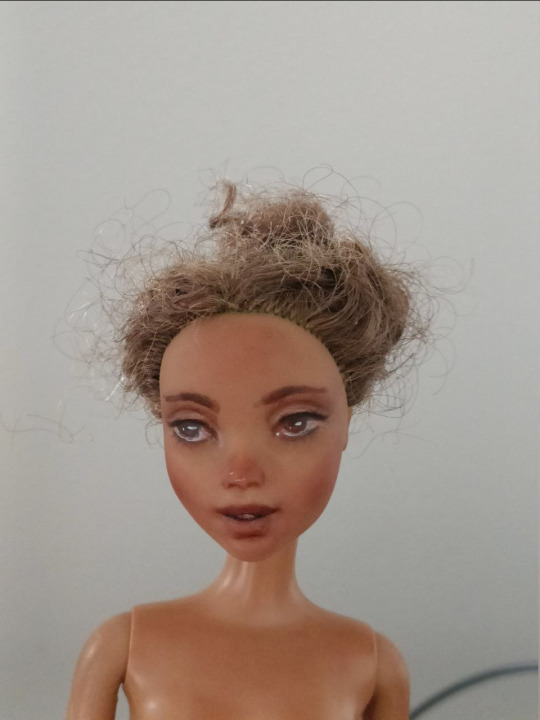
Undergarments
Combinations and stockings
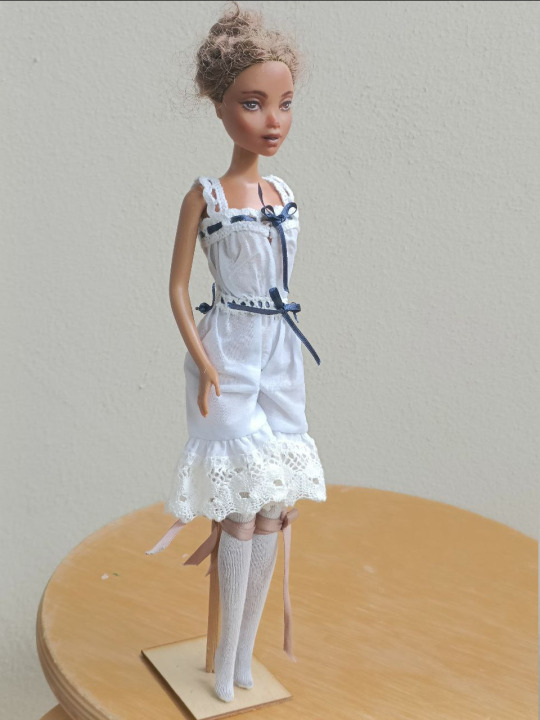
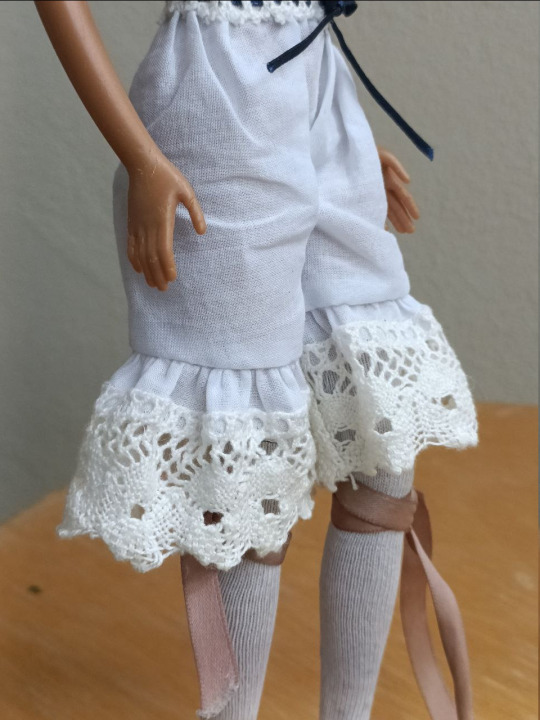
The combinations are split crotch as they were in the period. They are from thin cotton voile I have a lot of and is very appropriate. I didn't have really tiny enough lace for this, so it's kinda bulky, but I think it's okay enough. The stockings are cotton knit, which fits well. The garters are not actually necessary for this doll since her legs are rubbery.
Corset
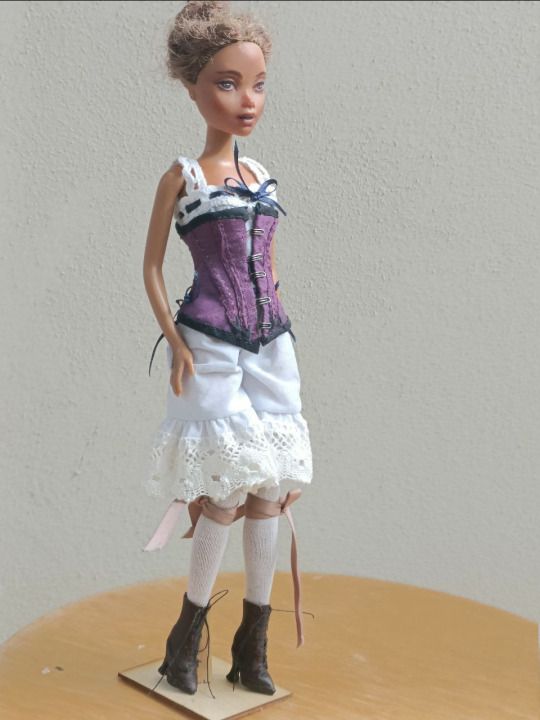

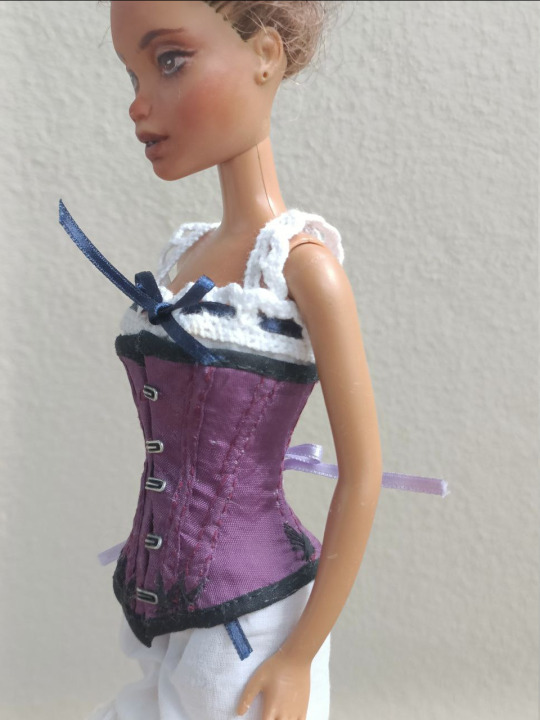
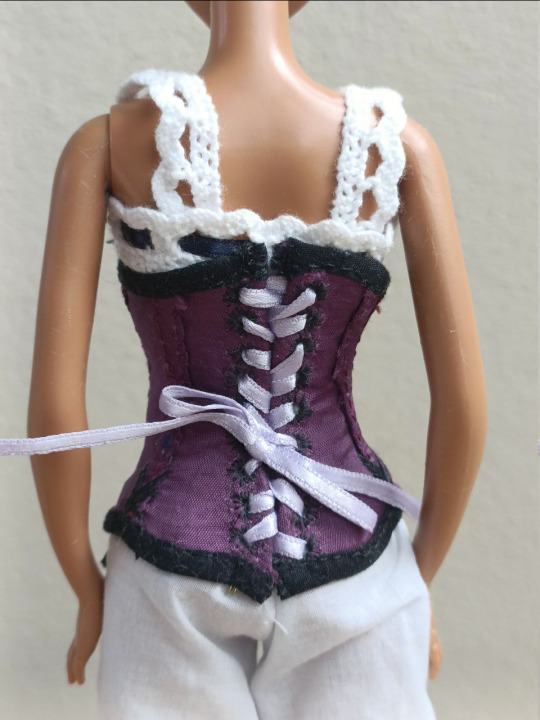
I made the corset from a firm-ish linen and satin rayon pretending to be silk as the fashion fabric. The stitching of the boning channels is not super neat, this fabric is very unforgiving, I didn't have exactly matching thread and the scale made it very difficult. I of course didn't have tiny busk, so I used small hooks, sewed thread loops for them and used narrow metal wire for the edges. I think it looks surprisingly right on the outside. I used the same wire as the boning to reinforce the lacing on the back. I didn't actually use boning elsewhere but the tightly packed linen edges in the boning channels kinda work like lighter boning. I think it keeps the shape pretty ways even with just that. I stitched cotton tape inside to shape the corset further. I also didn't have tiny metal eyelets so I hand-sewed the lacing holes.
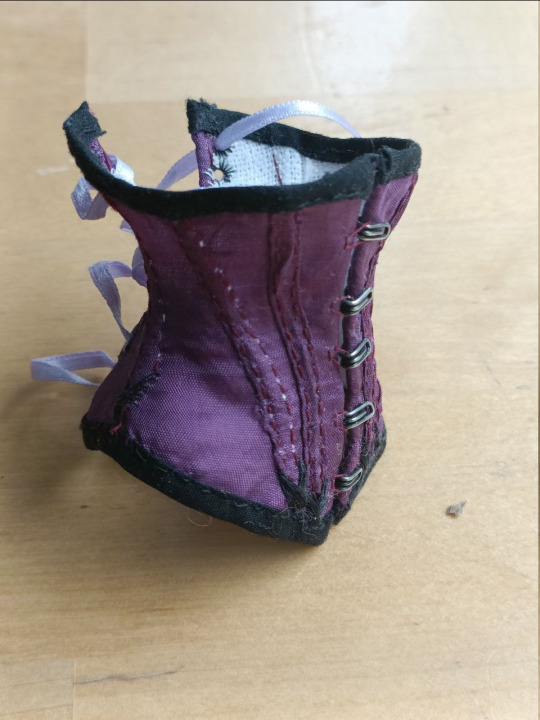
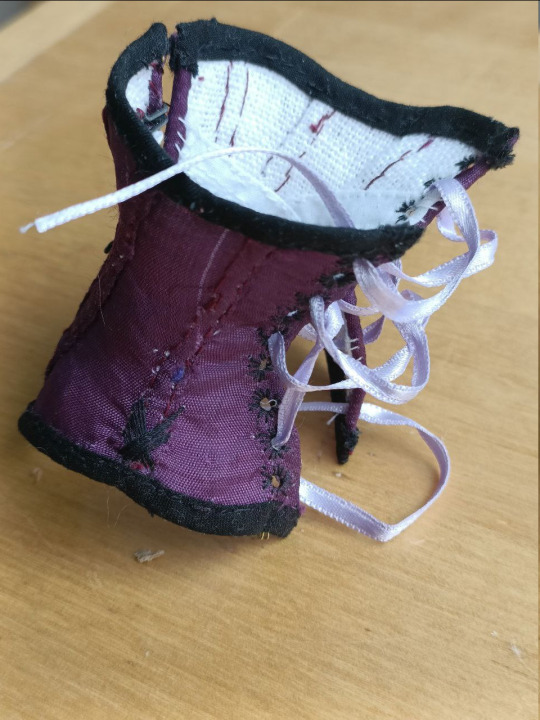
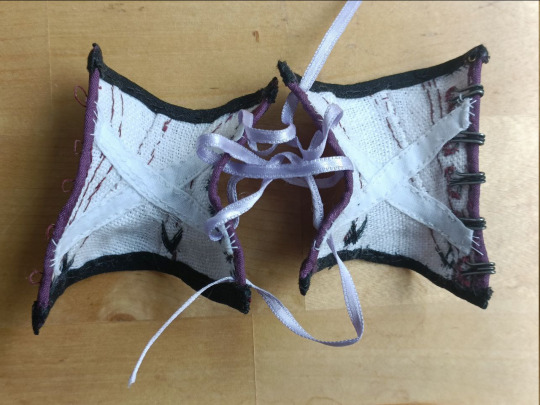
Bustle pad
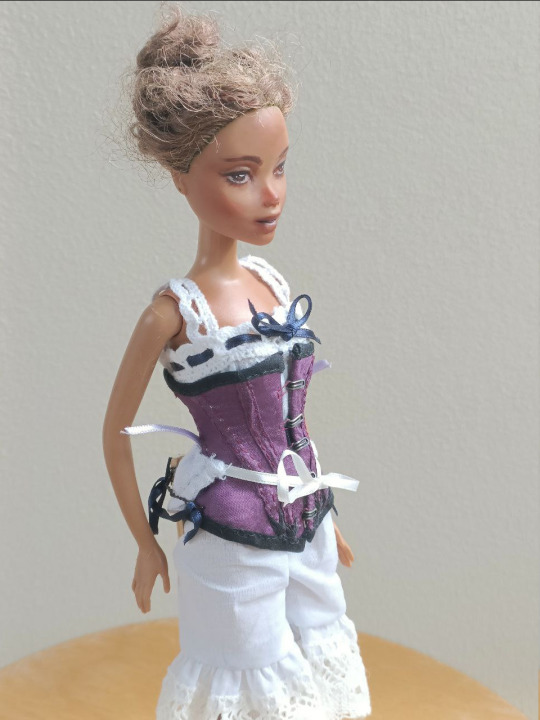

The bustle pad is from linen and stuffed with tiny cabbage.
Petticoat
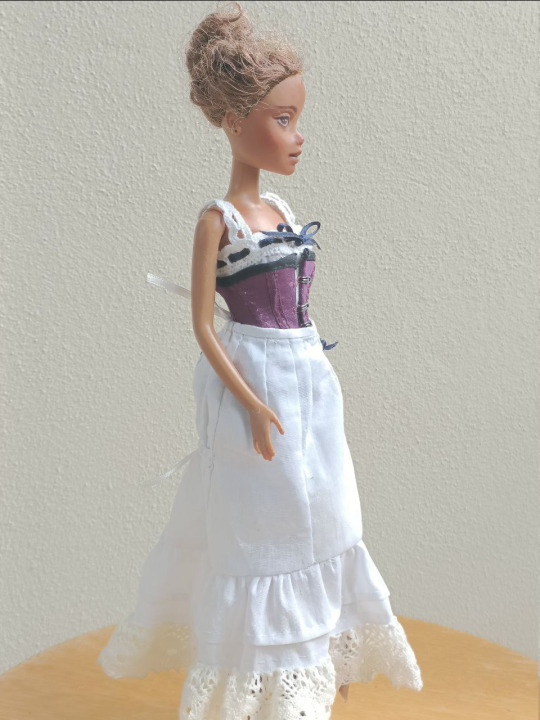

The petticoat is from the same cotton as the combinations.
Outer wear
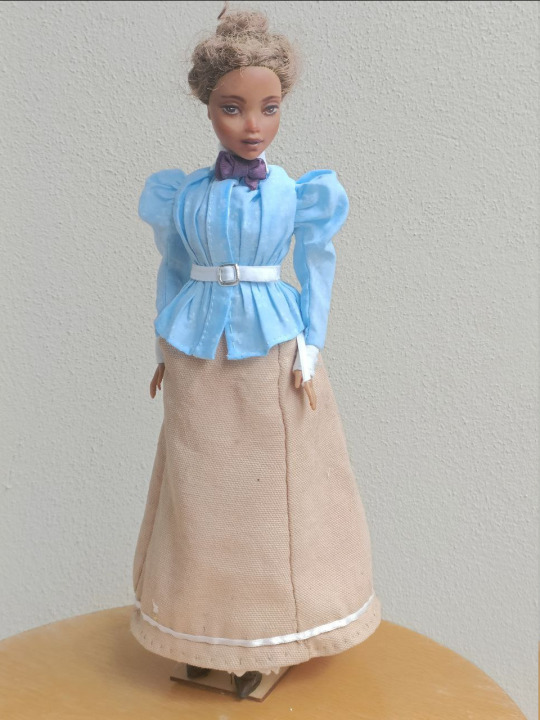

Skirt
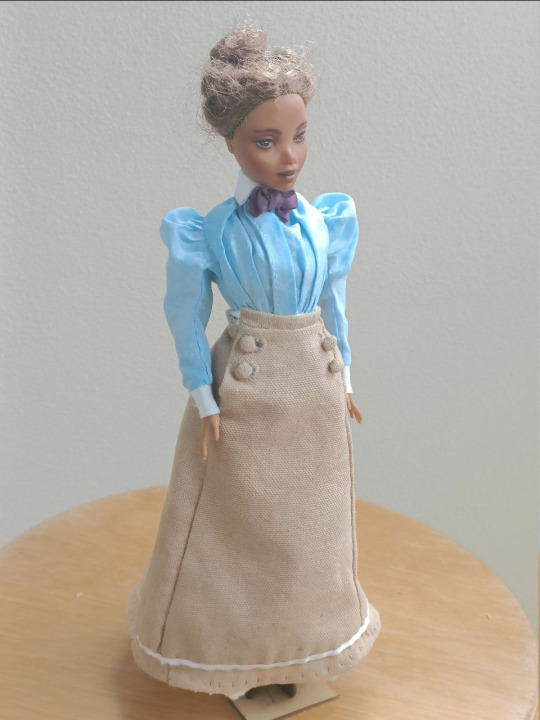
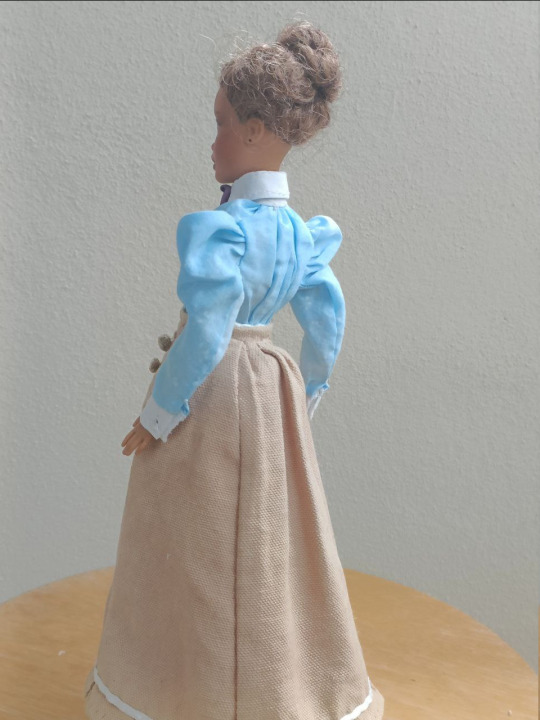
The fabric is cotton half-panama. It's pretty thin, but firm. I would have liked to use a woven wool, but I didn't have any that's thin enough to work in this scale. I think this cotton looks close enough in this scale to a wool with a tight weave, so I'm imagining it's that. My problem was that the cotton was white, but I wanted light brown. I wasn't going to buy any fabric for this, so I did the reasonable thing and dyed it with red onion peals (I've been doing natural dye experiments so this worked well for me).
Shirtwaist
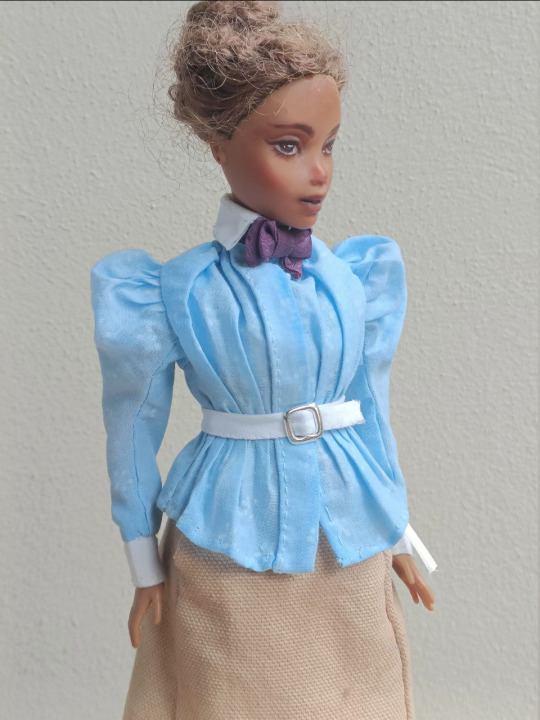
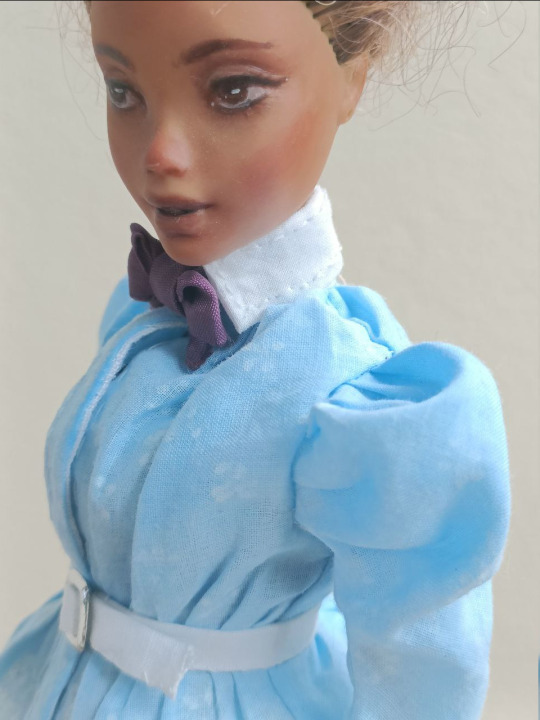
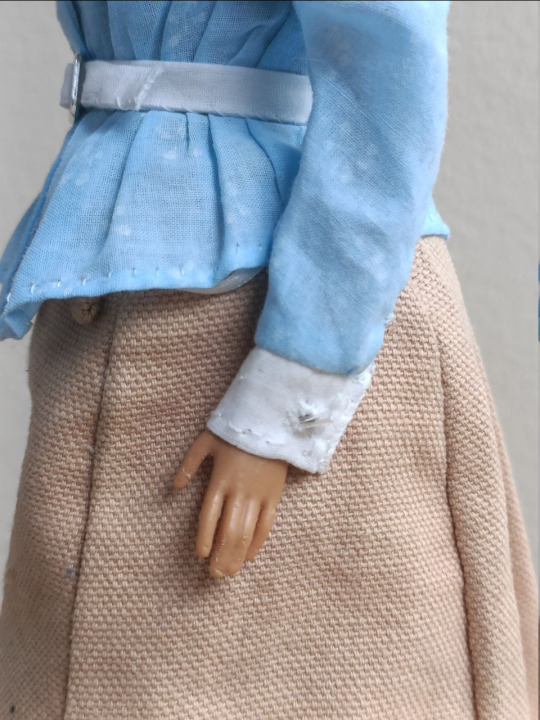
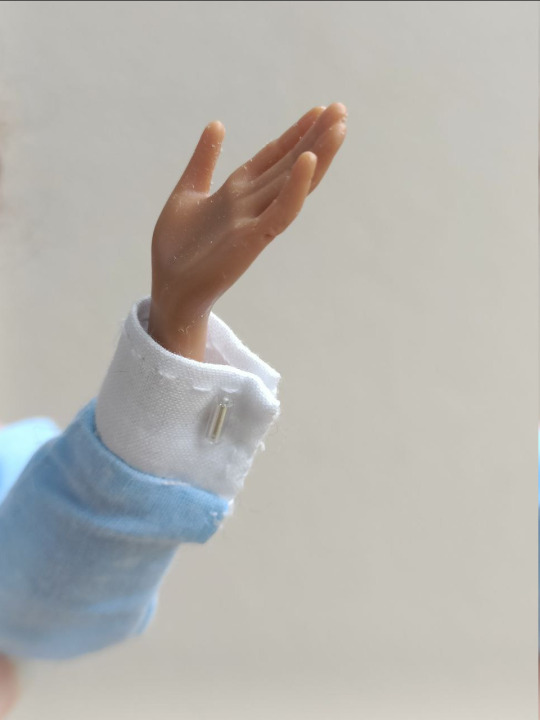
The shirtwaist is from the same cotton as the undergarments. Yes, I dyed it too. I didn't have thin enough cotton in a color that would fit with the skirt and the purple bow, so I dyed it light blue with fabric color. Since I already went the trouble of dyeing I decided I might as well make a small flower print to it since that was popular in the era. I didn't want it to jump out too much but the lighting makes it even less visible. I made it with a white fabric pen. The collar and cuffs are reinforced with linen. I also sewed small stick-like beads to the cuffs on both sides, so one acts as a button (I sewed a buttonhole too) and the other makes it look like they are cufflinks. The bow is from the same fabric as the corset and the belt is sewn from the same cotton as the shirtwaist. The buckle is from a barbie belt.
Waistcoat
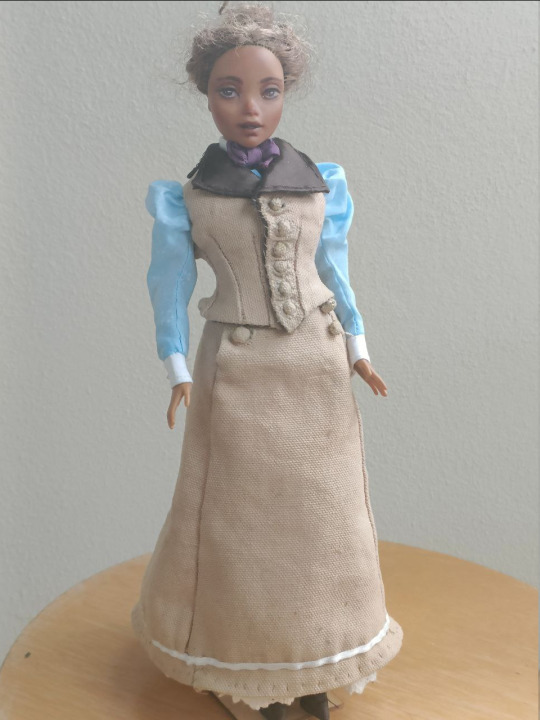
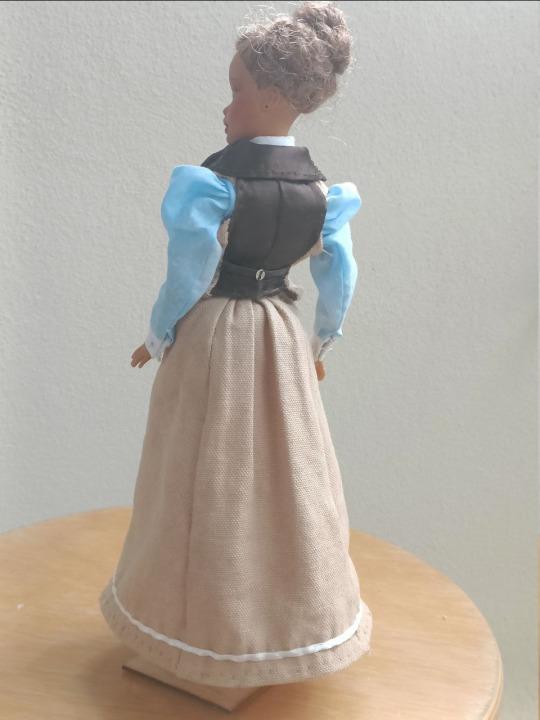
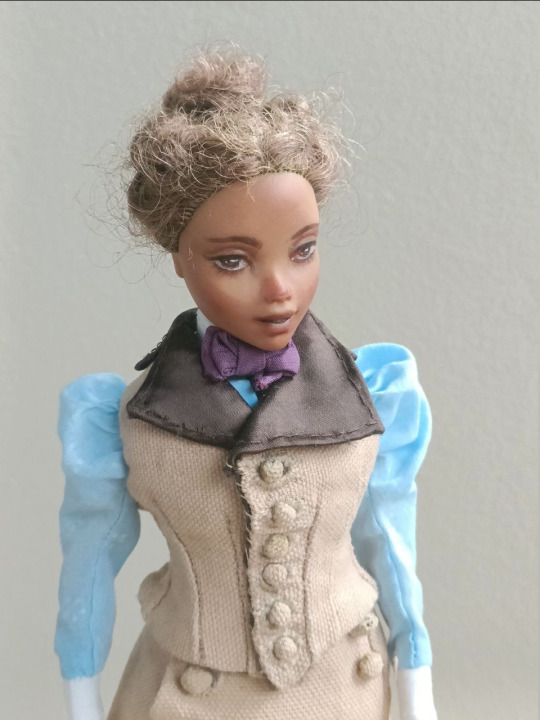
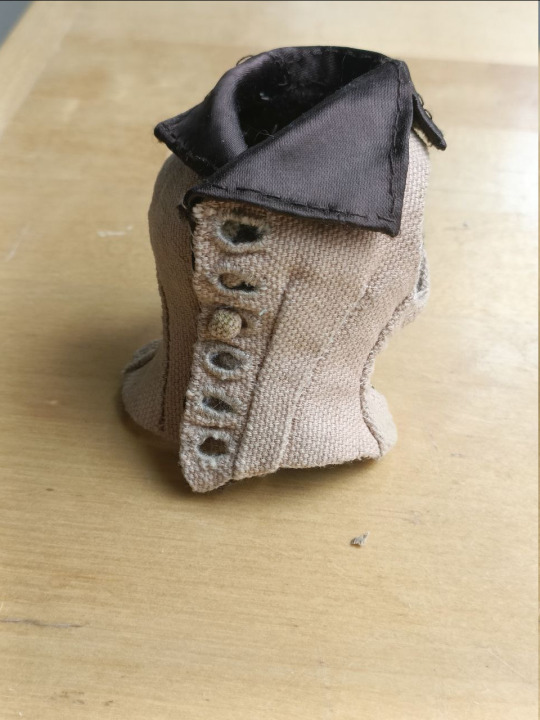
The waistcoat is from the same fabric as the skirt, thought the lapels and the back are from another satin rayon. I tailored the front panels and the lapels by stitching the linen interlining with tailor's stitches (I don't remember if that's the correct word in English) into shape. There is some wonkiness on one side of the hemline for some reason.
Boots
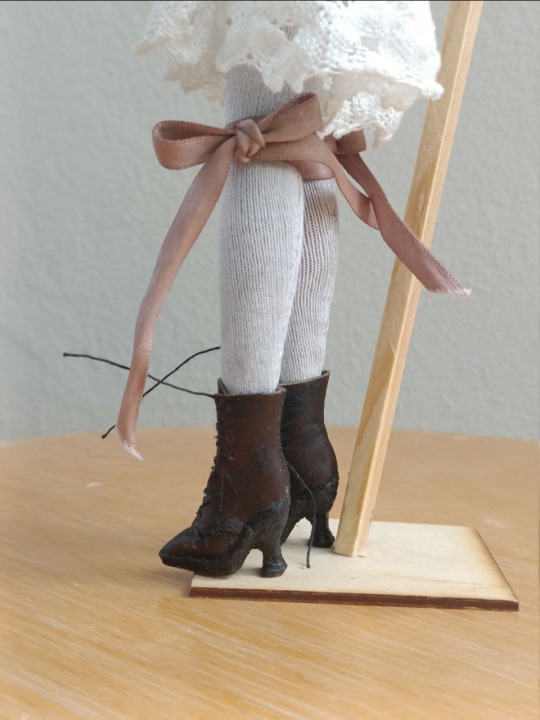

I made the slightly insane decision to make the shoes fully from leather, like they would have been in the period. I had an old broken leather wallet I had saved in case I needed some leather scarps. It has fairly thin leather, so it was workable here. It's light brown though, so I used black shoe polish to darken it. I wanted black or very dark brown shoes. I stacked the heels from glue and leather pieces and carved them into the right shape and sewed the shoe itself to leather shaped as the sole and glued it to the heeled and shaped sole. After I had shaped the shoes and the heels as much as I could I painted the heels black.
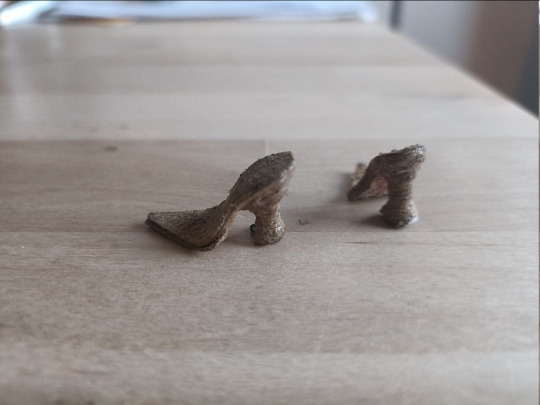
#historical fashion#fashion history#sewing#custom doll#ooak doll#victorian fashion#dress history#costuming#historical costuming#doll clothes#doll customization#historical sewing#my scene#my art#dolls
650 notes
·
View notes
Text


I finally went back to fix up the top of my medieval dress. It's such a simple difference that literally nobody would even notice but it looks so much better to me and that's all that matters. I also finished all the raw seams on the inside of the dress so I wouldn't have to fiddle with it while I add the boning channels to the side seams (another thing im ignoring from the historical references).

#sewing#my sewing#sewing project#medieval wip#sewing wip#wip#current wip#sewing historical#historical costuming#historical dress#historical fashion#renaissance#ren faire#renfaire#ren faire outfit#vintage fashion#fashion design#sewing updates
4 notes
·
View notes
Text






Hi I’m really. Proud of these. Perhaps one day I will actually sew them. Looks off into the stormy distant sea
343 notes
·
View notes
Text


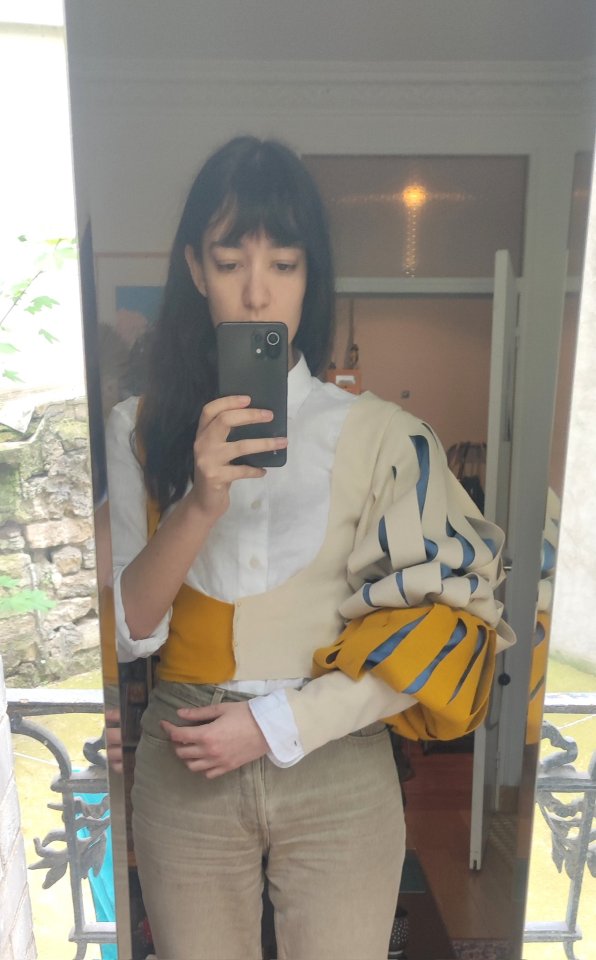
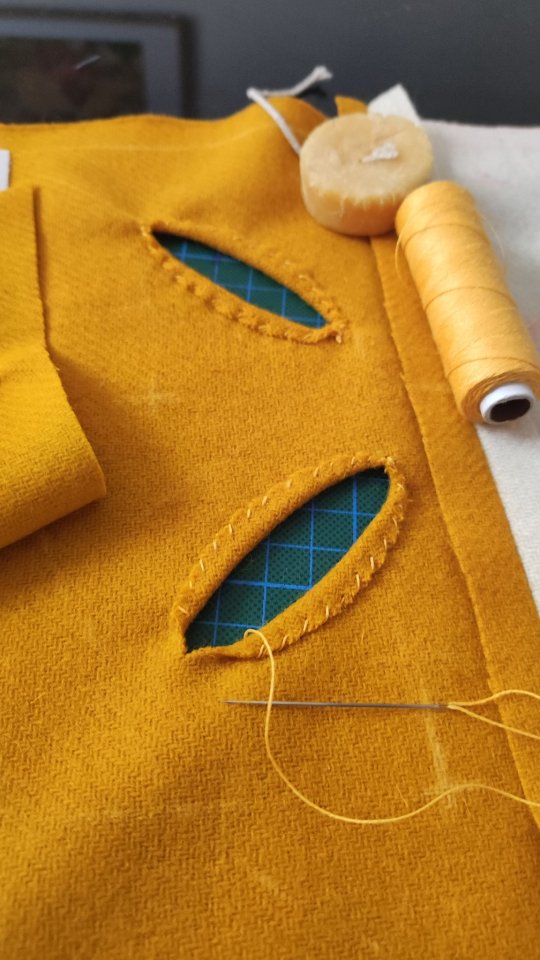

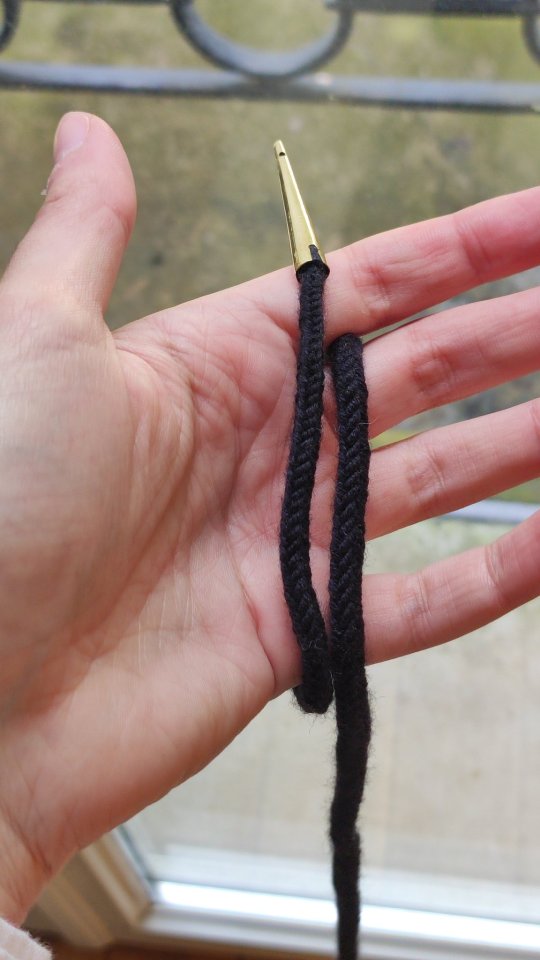
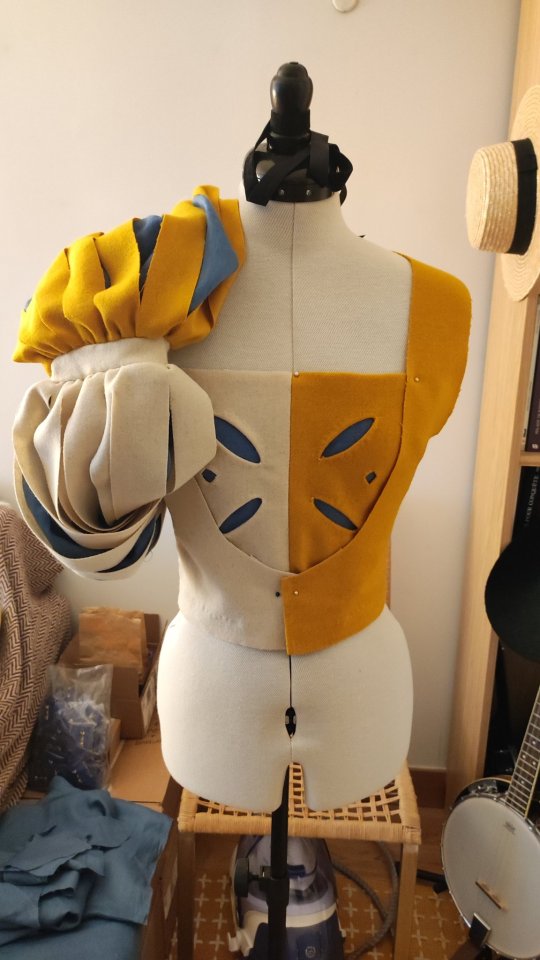




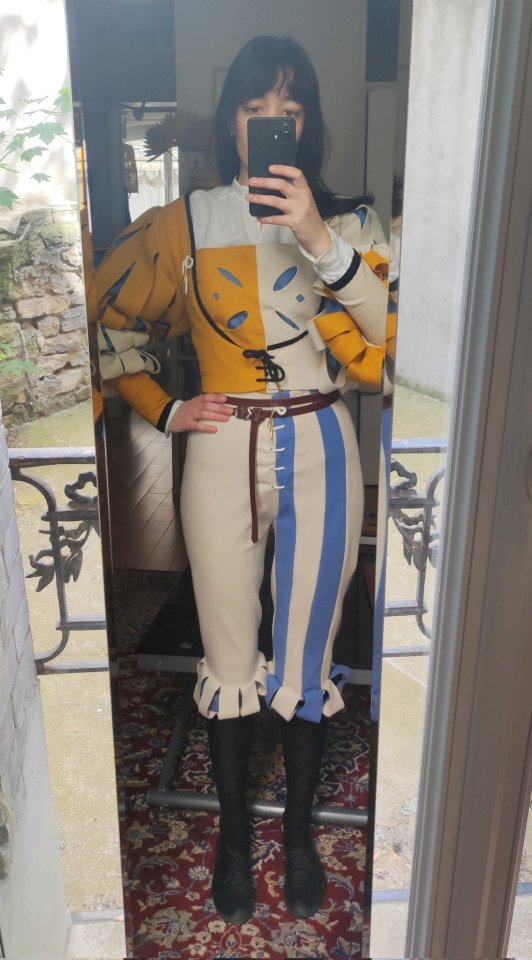


Progress on my current project ! Having some with stripes and slashing this time around. Didn't take any progress photos for the hosen/pants because it broke my brain a little, lol. I also started doing fingerloop braiding for the lacing cords.
I still have to fix a few things on there, including fixation on the brustfleck, and after that onwards to making the hat !
#historical costuming#sewing#16th century#landsknecht#germanic guard#renaissance#it's landsknecht inspired but I also like to think of it as#jestercore#first time draping an drafting everything myself woo !#my art
11K notes
·
View notes
Text
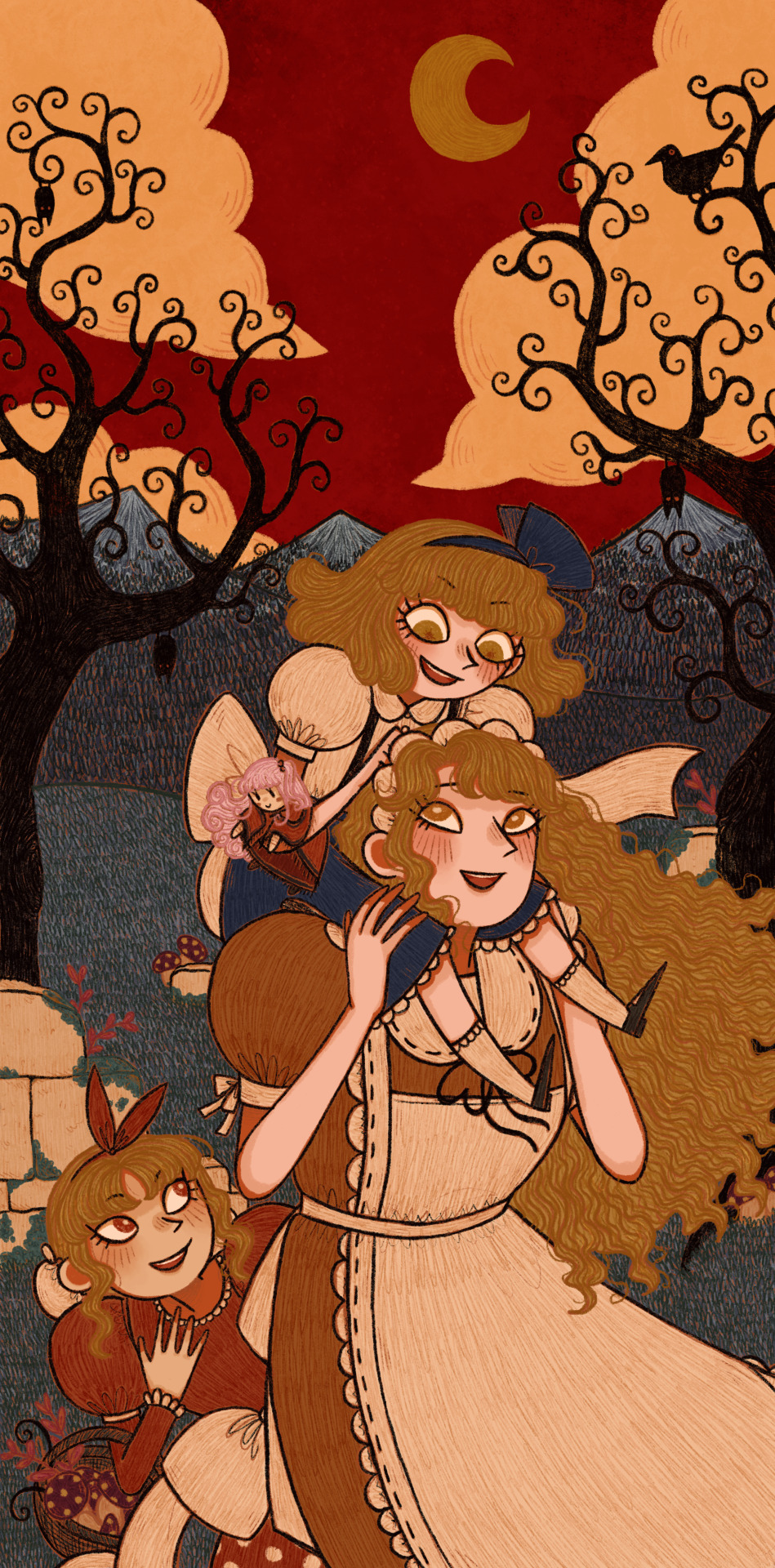
I like to imagine Yumeko and Alice having a sisterly bond! Alice's dolls can swordfight, what if it was thanks to Yumeko?
Ayana's here too, she might be a midboss but I like to include her
#touhou#touhou project#東方project#touhou pc98#my art#yumeko#alice margatroid#ayana#sorry for being so inactive...#I've developed a new hobby and spent most of my free time on it#sewing and studying historical clothes is so fun you see#expect some historical touhou art coming soon
492 notes
·
View notes
Text
*quietly chanting* uneven stitching is historical, uneven stitching is historical, uneven stitching is historical, uneven sti-
649 notes
·
View notes
Text
So… I saw this antique corset in Instagram, and you know me (you actually don’t, so just trust me when I say it) I knew I had to have it. So I made my own version of it) what do you think about it?
Left is the antique one, right is mine) it’s not exactly the same, but highly inspired


#corsetry#my sewing#sewing#corsetmaking#corset#historical costuming#historical fashion#historical#historical sewing#1890s#1890s fashion#victorian fashion
223 notes
·
View notes